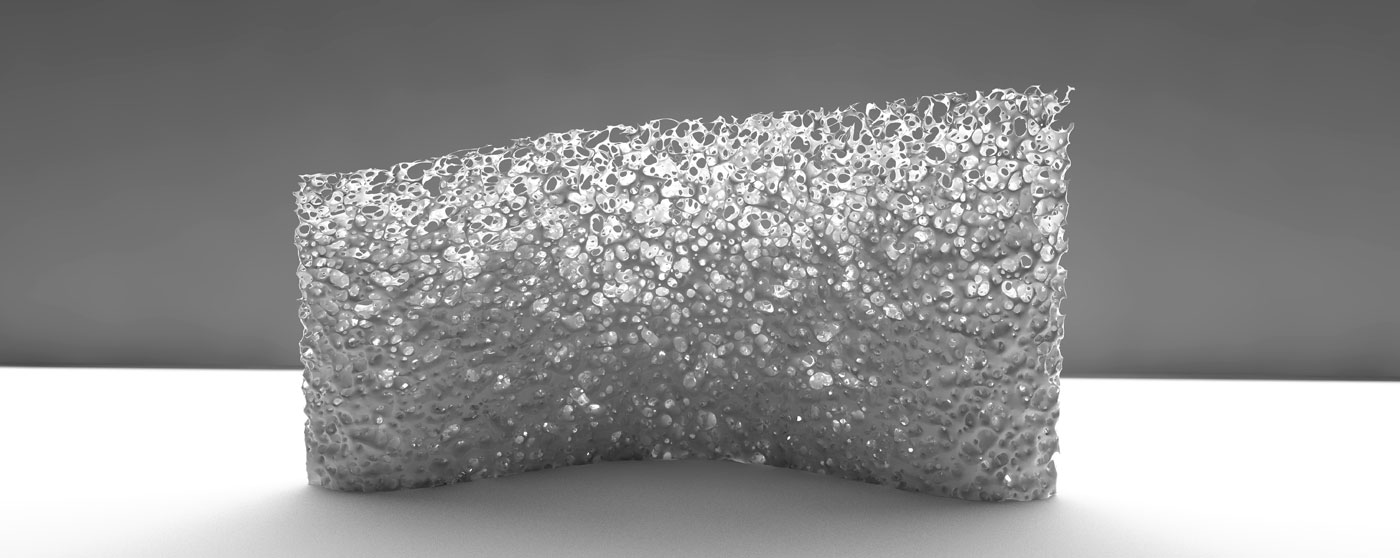Based upon the principles and behavior of bone formation, PolyBrick 2.0 is the first fully 3D – printed and fired ceramic brick assembly.
PolyBrick showcases the next steps in the integration of complex phenomena towards the design, production, and digital fabrication of ceramic form in the design arts and architecture. This work includes advances in digital technology, three – dimensional (3D) printing, advanced geometry, and material practices in arts, crafts, and design disciplines. PolyBrick makes use of algorithmic design techniques for the digital fabrication and production of nonstandard ceramic brick components for the mortarless assembly and installation of the first fully 3D – printed and fired ceramic brick assemblies.
PolyBrick 2.0 is generated with the rules, principles and behavior of bone formation. This allows for the production of variegated bricks that are light and porous at the top of a given structure and dense at the base to carry load and maintain efficient structural integrity. Using customized digital tools, low – cost printing materials, and component – based aggregations, our research utilizes readily available 3D printing technology to develop large – scale forms through the aggregation of interlocking component based systems. Operating within the scalar limitations of current print bed sizes, we developed and tested a set of mass – customized components with embedded local and global awareness and demonstrated that we could achieve forms much larger than previously possible. We have effectively designed a system for mortarless brick assemblies at scales beyond existing constraints of the print bed size of a large – format color printer. The production of ceramic form includes three distinct phases: greenware, bisque firing, and glaze firing. The actual clay modules in the PolyBrick project are directly printed using a 3D color printer.
Based upon the principles and rules of bone formation behavior, PolyBrick 2.0 challenges the standardized unit size of a brick and instead proposes, through advances in 3D printing and material craft, the possibility of differentiated brick morphologies. The possibility of incorporating differentiated ceramic bricks and modules in architecture through a controlled and mass – customized process that integrates design to production in one linked loop, is readily at hand through these initial prototype studies. The plastic nature of clay offers up a material terrain for a careful and highly controlled deployment of complex and organic form. In this sense, ornament takes on a deeply structural and material realm, where code / pattern, geometry, material, fabrication, and assembly are interconnected. We have effectively designed a system for 3D printing mortarless ceramic brick assemblies at scales and in materials well beyond existing constraints of additive manufacturing technology. Most importantly, these prototypes, through their generative and complex material configurations, give rise to new aesthetic and spatial awareness that on a meta level marks a shift away from Cartesian formal orders, of the thrust of column, beam and arch and towards interiorities, networks, fabrics and topological meanders that are pliable, plastic and open.

























